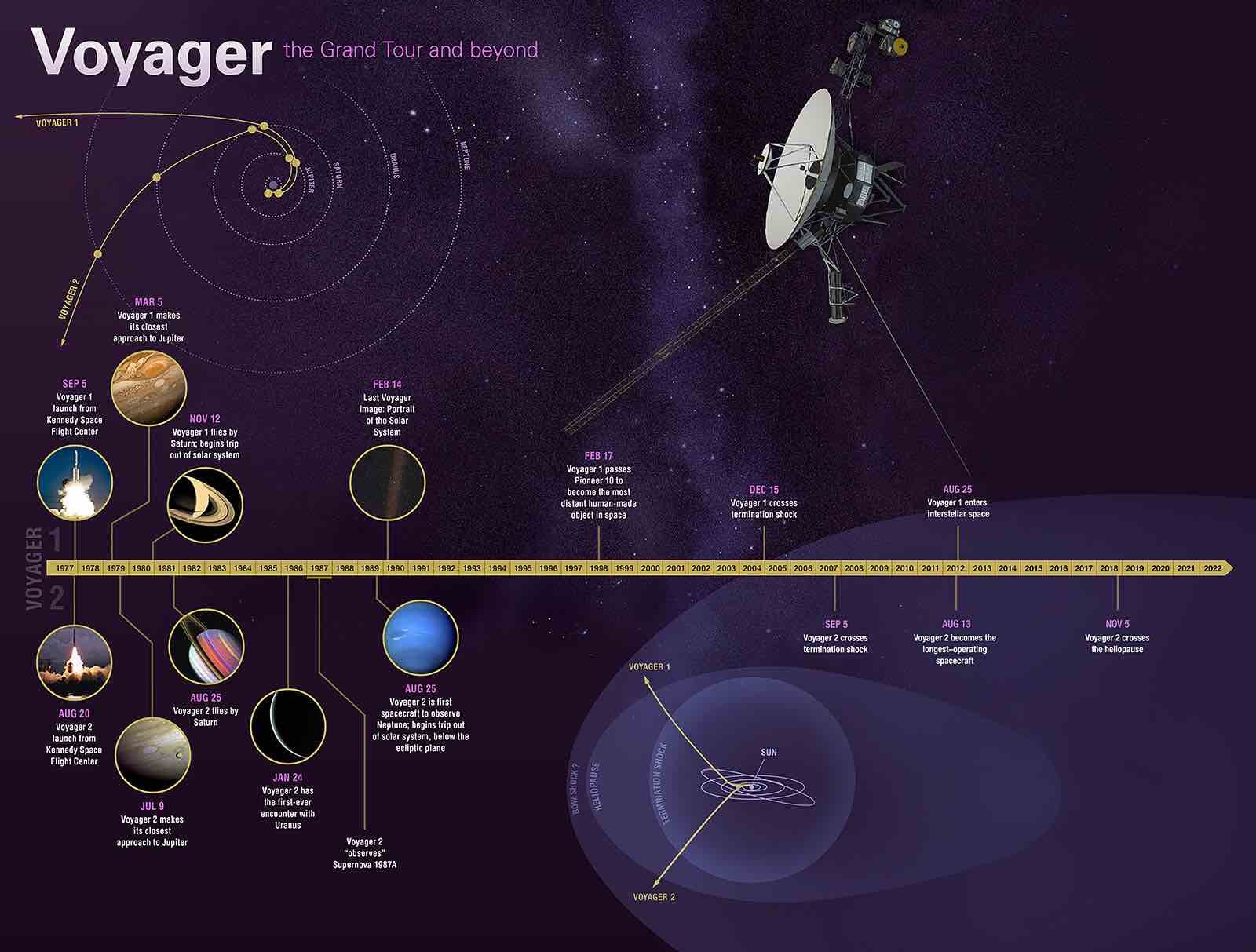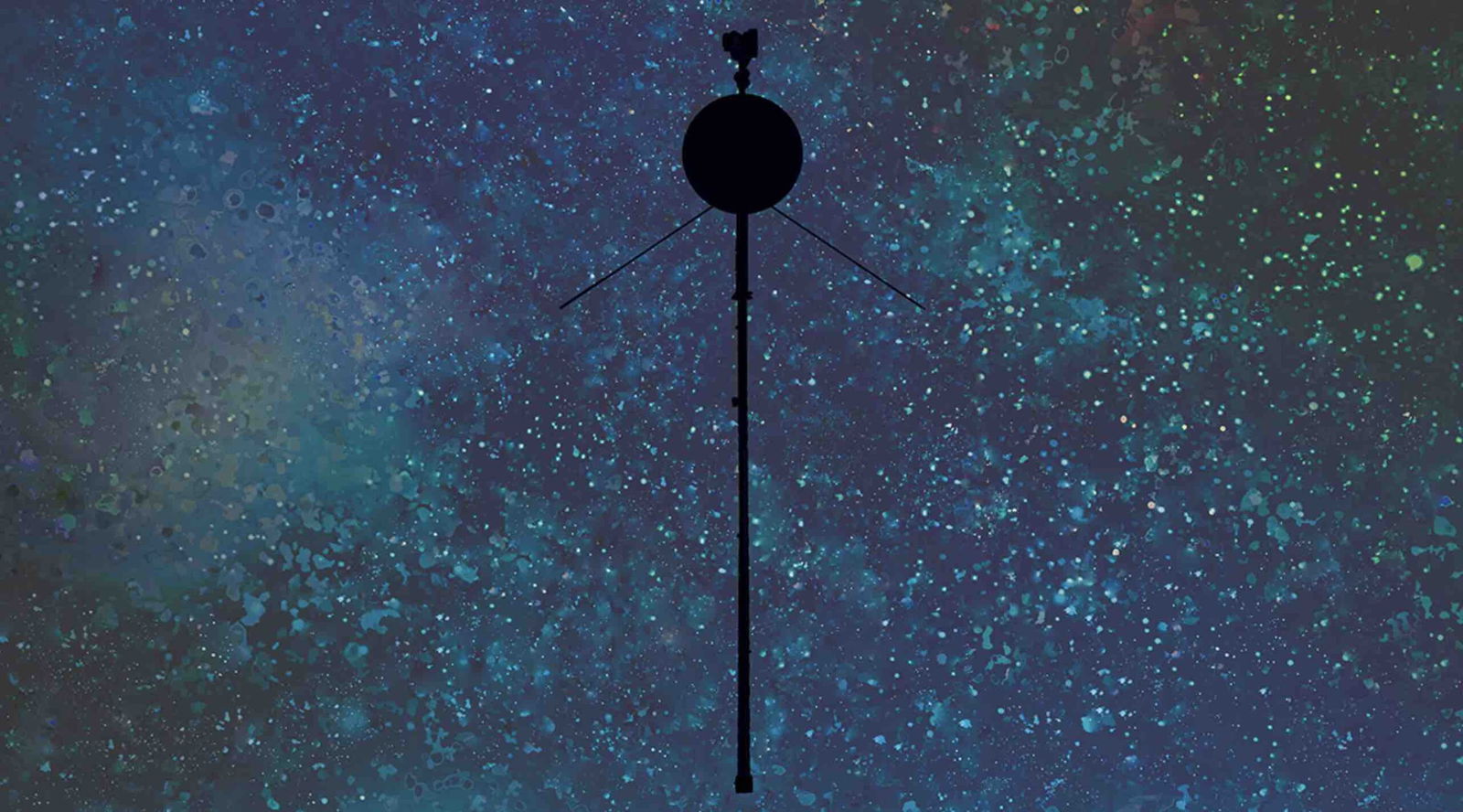NASA engineers were reportedly left baffled recently after receiving a perplexing series of coded messages from a point in space nearly 15 billion miles from Earth, according to a recent update shared by the U.S. space agency.
The signals, consisting of a strange, repetitive batch of binary code, were coming from a familiar source: the farthest manmade object from Earth.
According to an update that appeared this week on NASA’s blog devoted to solar activity, The Sun Spot, engineers have been attempting to resolve a problem occurring with one of the three computers onboard the Voyager 1 probe.
Since late 1977, Voyager 1 has been carrying out its mission to study the outer Solar System and interstellar space. Presently, the distant space probe remains in communication from its position several billions of miles from Earth through NASA’s Deep Space Network.
However, an issue affecting the probe’s flight data system (FDS) is now impacting its ability to communicate with its telemetry modulation unit (TMU), one of the spacecraft’s subsystems, which is preventing it from relaying any science or engineering data back to Earth.
Problem-solving beyond the heliopause.
The @NASAVoyager team is investigating an issue with #Voyager1‘s Flight Data System. The spacecraft is receiving and executing commands sent from Earth but not returning useable data.
More on the evolving situation: https://t.co/SYuVX7lt45 pic.twitter.com/GWDFGfteQ4
— NASA JPL (@NASAJPL) December 12, 2023
Voyager 1 is still receiving information NASA engineers are transmitting to it, and the probe does appear to still be attempting to execute commands, wrote Miles Hatfield from NASA’s Goddard Space Flight Center on December 12.
Voyager 1’s FDS is primarily equipped to monitor the spacecraft’s instrumentation and retrieve data from these systems, along with the collection of engineering data that conveys the probe’s overall vitals. Periodically, this information is combined into data packages that the spacecraft’s TMU dispatches back to NASA.
Generated in binary code, these messages normally appear in a standard series of 1s and 0s. However, NASA engineers were perplexed recently when the decoded data packages Voyager 1 was sending appeared to be repetitive, as though some functions of the TMU were “stuck.”
Troubleshooting by NASA engineers revealed that the problem appears to be originating further up the chain from within the FDS, rather than the TMU itself.
Last weekend, Voyager team engineers attempted a restart of the FDS—a feat that, presumably, would be at least mildly complicated for any system that requires communication across a 15 billion-mile distance. However, current attempts to restore the FDS have remained unsuccessful, and they are expected to continue. While NASA remains optimistic that they will be able to reinstate proper communications from the spacecraft, doing so may require days or even as much as several weeks.
One of the problems the Voyager team faces, in addition to working across incredible distances to communicate with an Earthly spacecraft drifting at a solid 38,210 miles per hour on its way through interstellar space, has to do with technology that is now several decades old.


“Finding solutions to challenges the probes encounter often entails consulting original, decades-old documents written by engineers who didn’t anticipate the issues that are arising today,” Hatfield wrote this week. “As a result, it takes time for the team to understand how a new command will affect the spacecraft’s operations to avoid unintended consequences.”
Once commands are finally determined to be safe to send to Voyager 1, engineers have to wait almost a full day for the messages to reach the spacecraft. Add to that the response time for the spacecraft to send its replies, and a total of close to 45 hours are required just to determine whether any single command has successfully initiated a correct response from the spacecraft.
One of the most iconic NASA spacecraft, Voyager 1 crossed into interstellar space in 2012, and its likeness has spawned several pop cultural portrayals, which include the appearance of a fictional Voyager 6 probe enhanced by alien artificial intelligence in the 1979 film Star Trek: The Motion Picture.
Micah Hanks is the Editor-in-Chief and Co-Founder of The Debrief. He can be reached by email at micah@thedebrief.org. Follow his work at micahhanks.com and on X: @MicahHanks.

